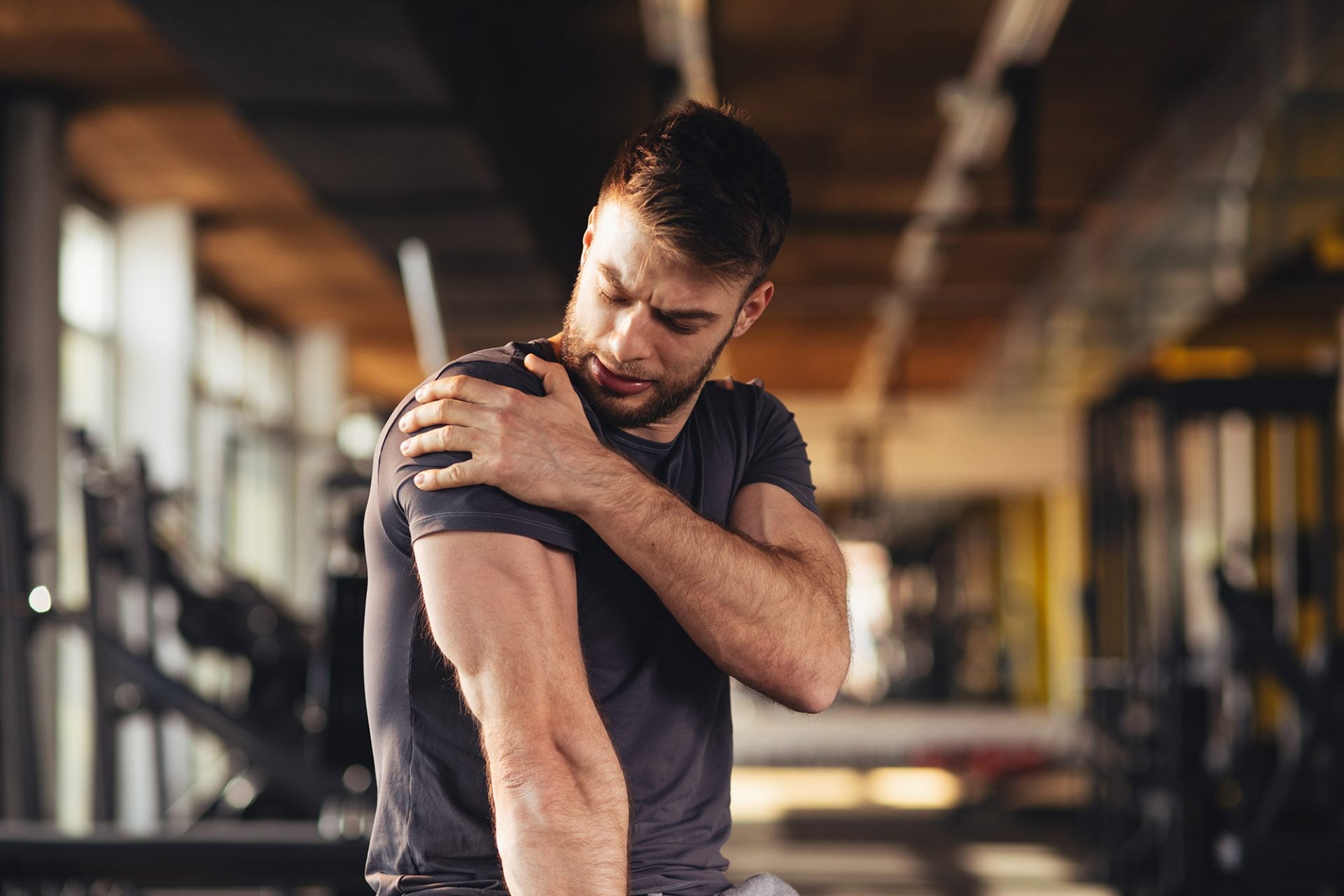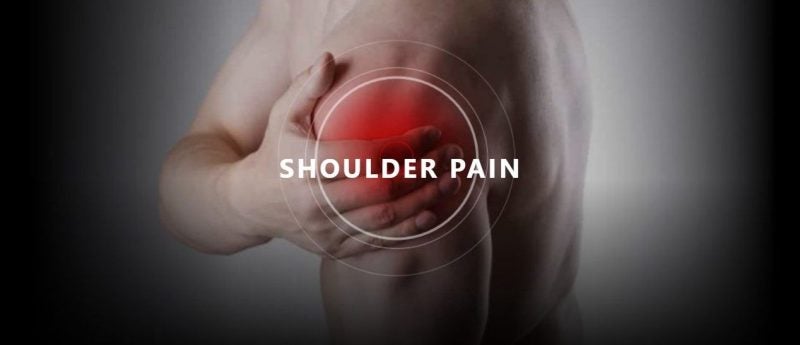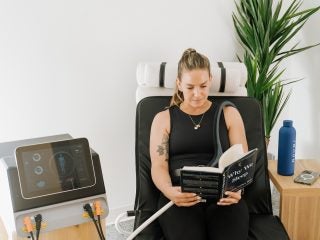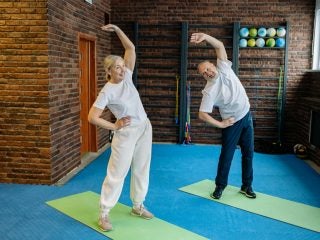Shoulder pain is a generalized term that is used to describe pain in the upper arm and shoulder region, but not always in the shoulder joint itself.
Because of the complex and interdependent network of muscles, bones, nerves and connective tissue that surround the shoulder girdle, diagnosing the cause of shoulder pain can be tricky. But accurate diagnosis is key to effective treatment that restores full function to the shoulder joint.
Shoulder Joint Structure and Function
Your shoulder girdle is a confluence of three bones: the scapula, aka shoulder blade at the back of your upper body, the clavicle, or collar bone, at the front, and the upper arm bone called the humerus. The shoulder girdle provides a rigid structure for your muscles and connective tissues to attach to. The shoulder joint itself, technically called the glenohumeral joint, is made up of the head of the humerus and the scapula, forming a ball-and-socket structure that gives the shoulder joint its multi-planar range of motion.
Because of its extreme mobility, a healthy joint needs to be stabilized by muscles and connective tissues to keep it in place and prevent dislocation. To stabilize the shoulder joint capsule, strong ligaments, with the help of muscles, serve to hold everything in place. When muscles become overly tight on one side of the shoulder girdle and overly lax on the other, it can compromise the integrity of the ball-and-socket and cause shoulder pain.
Common Causes of Shoulder Pain
When people experience shoulder pain, they often look for a specific episode or incident that explains its appearance. But while shoulder pain is often related to repetitive overuse during sports and exercise, inactive people are also prone to shoulder joint pain and dysfunction. Common causes of shoulder pain include:
- Repetitive overuse from overhead sports like swimming, tennis, golf or baseball
- Occupational overuse from jobs that demand repetitive shoulder movement
- Excessive use of computers and handheld devices that put the spine out of alignment for extended periods, causing upper body muscle imbalances
- Chronic poor posture
- Sedentary lifestyle and upper body muscle weakness
For non-athletic populations, the best way to avoid shoulder joint pain and dysfunction is to become physically active. Activities like yoga and resistance training can help you realign your posture to restore balanced muscle tension in your upper body, which in turn helps the humerus to nestle firmly in its place at the scapula and glide smoothly.
Rotator Cuff Pain and Dysfunction
Four important muscles attached by tendons make up the shoulder’s rotator cuff that serves to hold your shoulder joint in place and facilitate unhindered movement.
-
The external rotator muscles, supraspinatus and infraspinatus, help to move your arm away from your body and rotate the shoulder outward. You use your external rotator muscles to swim the backstroke, or in a backswing when playing golf or tennis. The smallest rotator muscle, teres minor, also contributes to external rotation, but its most important job is to stabilize the shoulder joint and prevent dislocation.
- The internal rotator muscle subscapularis works with your pectoral muscles to draw your arm across the front of your body or move it inward a downward, as when swimming the crawl stroke or pitching a hardball.
Damage to any of the rotator cuff muscles can be both painful and debilitating. Common rotator cuff injuries include:
- tears and ruptures of the muscles or tendons
- tendinitis caused by soft tissue inflammation
- tendinopathy caused by chronic soft tissue irritation or degeneration
- Impingement of a nerve that causes pain and restricts range of motion
When rotator cuff tendons become entrapped by bony structures in the shoulder, it can cause inflammation and damage to the tendon tissue. Rotator tendon entrapment is the most common cause of shoulder pain. Rotator cuff injuries are most common in athletes who play overhead sports and in physically active people over the age of 40.
Burning Pain in the Shoulder or Shoulder Blade
Pain beneath or around your scapula can radiate to your upper back, neck and shoulder, and can range a sharp burning feeling to a tender achy sensation. Shoulder blade pain can signal a minor overuse injury or a life-threatening health condition. In either case, burning shoulder pain should not be ignored. Common causes of shoulder blade pain include:
- Sitting for long hours with a rounded spine
- Inefficient mechanics when lifting objects or playing sports
- Repetitive overuse from sports, exercise or occupation
- Weak muscles that cause the posterior shoulder girdle to become unstable
- Herniated disc or compression fracture in the upper spine
- Rib dislocation
- Heart attack or aortic dissection
A burning sensation in the shoulder joint itself can indicate bursitis, an inflammation of the small fluid-filled bursa sacs that cushion your soft tissues from your bones and allow them to glide smoothly. Burning muscle pain in the shoulder can also signal tendonitis, an inflammation of tendon tissue where it attaches to bone.
Left Shoulder Pain
Pain in the left shoulder can be due to a mild injury, or it could signal a serious cardiac emergency, especially in men. Pain that begins in the left shoulder and radiates down the left arm or up to the neck and jaw may be a sign that you are having a heart attack. In addition to left shoulder pain, look for these signs:
- Sudden and severe onset of pain
- Left shoulder pain accompanied by chest pressure or a squeezing sensation
- In women, pain can radiate to either arm and travel to the jaw, shoulder blades and upper back. It may be accompanied by abdominal pain and nausea.
In conjunction with the above symptoms, look for:
- Feelings of sudden severe anxiety
- Shortness of breath
- Vomiting
If you think you may be having a heart attack, sit down or lie down, call 911 and take an aspirin while you wait for EMS. Taking quick action can mean the difference between life and death.
Where to Get Treatment for Shoulder Joint Pain
Because of the complex structure and diverse movement capabilities of the shoulder joint, it is important to find a doctor who specializes in musculoskeletal pain conditions. A sports physical therapist who works regularly with physically active and athletic populations is likely to have the most experience in treating shoulder joint conditions. Remember that accurate diagnosis is key to successful treatment. A physical therapy clinic that uses high-resolution diagnostic ultrasonography, such as NYDNRehab in Manhattan NYC, can view your shoulder in motion, in real time, to pinpoint the cause of your pain and provide the best shoulder pain treatment. Dr. Kalika, NYDNRehab’s clinical director, is a certified expert in diagnostic ultrasonography.
With these treatments, you can incorporate joint health supplements like JointXL Plus in your diet which help to reduce joint pain and enhance comfort, mobility & flexibility.



















